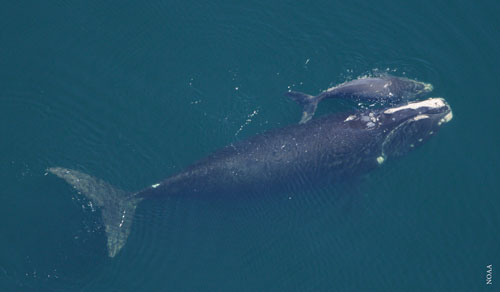Expanded protections for whale could curtail proposed offshore drilling
Last month, federal managers announced that the best available science warranted vastly expanding the critical habitat for endangered North Atlantic right whales, a move that could make offshore drilling proposals in the Southeast more complicated. 
The expanded habitat’s southern portion – the only known calving grounds for the right whale – is five times larger than previously identified, and includes the coastal waters of South Carolina and Georgia, along with portions of North Carolina and Florida. The expansion comes as the Bureau of Ocean Energy Management is considering proposals to open the waters offshore the Southeast coast to oil drilling and exploration, using powerful airgun blasts to search for undersea oil deposits.
Although the expanded habitat does not directly overlap with areas proposed for offshore drilling farther offshore, the potential for oil spills and increased ship traffic to service drill rigs, could harm the newly-expanded critical habitat zone. In addition, seismic testing for oil and gas deposits could significantly harm the vulnerable mothers and calves that use this area. Seismic testing bombards the ocean with noisy blasts in order to map the ocean bottom.
Scientists from the National Oceanic and Atmospheric Administration (NOAA) said the critical habitat was expanded based on decades of right whale sightings from airplanes and ships.
“We believe the expansion will further protect essential foraging and calving areas to further improve recovery of this animal,” said Eileen Sobeck, assistant administrator for NOAA Fisheries, in a statement. “We’re making significant progress in reversing the population decline of the species, and are seeing signs of recovery – up to about 500 animals from the estimated 300 in 1994. But we still have a long way to get to complete recovery.”
North Atlantic right whales are unique for their lack of a dorsal fin, which makes them difficult for boats and cargo ships to see, leading to deaths and injuries from ship collisions. Noise from industrial activity is another threat to the whales identified by NOAA. The whales calving grounds are found in shallow waters along the Southeastern seaboard.
